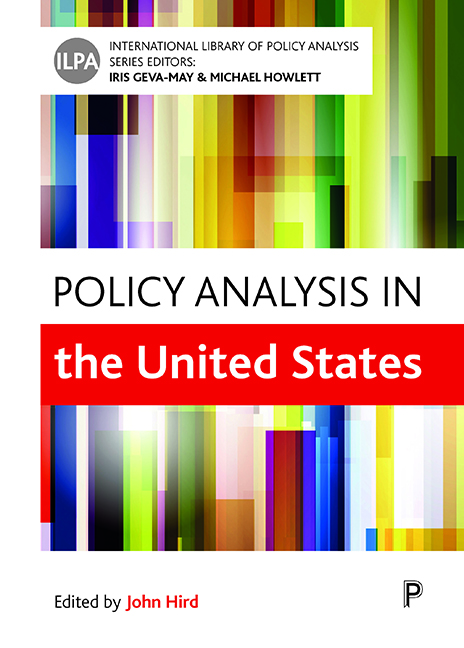Book contents
- Frontmatter
- Contents
- List of tables and figures
- Notes on contributors
- Editors’ introduction to the series
- Introduction
- Part One History, styles, and methods of policy analysis in the United States
- Part Two Policy analysis by governments
- Part Three Policy analysis outside of government
- Part Four Policy analysis education and impact internationally
- Index
Four - Reflections on 50 years of policy advice in the United States
Published online by Cambridge University Press: 12 April 2022
- Frontmatter
- Contents
- List of tables and figures
- Notes on contributors
- Editors’ introduction to the series
- Introduction
- Part One History, styles, and methods of policy analysis in the United States
- Part Two Policy analysis by governments
- Part Three Policy analysis outside of government
- Part Four Policy analysis education and impact internationally
- Index
Summary
For which of you, intending to build a tower, sitteth not down first, and counteth the cost, whether he have sufficient to finish it? … Or what king, going to make war against another king, sitteth not down first, and consulteth whether he be able with ten thousand to meet him that cometh against him with twenty thousand? (Luke 14: 28–31)
Birth of a profession
On August 25 ,1965 President Lyndon B. Johnson sent a directive to the heads of all federal departments and agencies. They were to use a planning, programming, and budgeting (PPB) system modeled on the system Secretary of Defense Robert S. McNamara had installed at the Department of Defense in 1961 as a basis for their agency's annual budget recommendations. PPB's beating heart was policy analysis. Using PPB is simply good management, LBJ suggested (Lynn 2015). More important was that LBJ's mandate was good politics. Launching a wellpublicized effort to demonstrate financial discipline and restraint in pursuing the administration's policy priorities would increase the prospects that Congress would support the president's pending budget requests.
At the time, Lyndon Johnson was caught in a political vice. He had committed his administration to a War on Poverty and a Great Society and, as well, to military success in Vietnam. Congressional leaders of his party were, however, refusing to consider tax increases to pay for these priorities. Brookings economist Charles Schultze, then head of the U.S. Bureau of the Budget, had already directed agency heads to create task forces to identify possible budgetary savings to make room for higher-priority activities. Two months later, Johnson's PPB mandate abruptly superseded Schultze's earlier directive.
This pivot was a product of bureaucratic politics. Schultze and Joseph Califano, formerly an aide to McNamara, now on the White House staff, proposed the PPB mandate to head off a move by other Johnson aides that the two men thought unwise: committing LBJ to the promulgation of a comprehensive set of longterm goals for America. Schultze and Califano had discussed introducing PPB to domestic policy planning on a pilot basis, but they pushed instead for going all-in. In a fraught political environment, LBJ embraced their bold proposal.
- Type
- Chapter
- Information
- Policy Analysis in the United States , pp. 73 - 90Publisher: Bristol University PressPrint publication year: 2018

